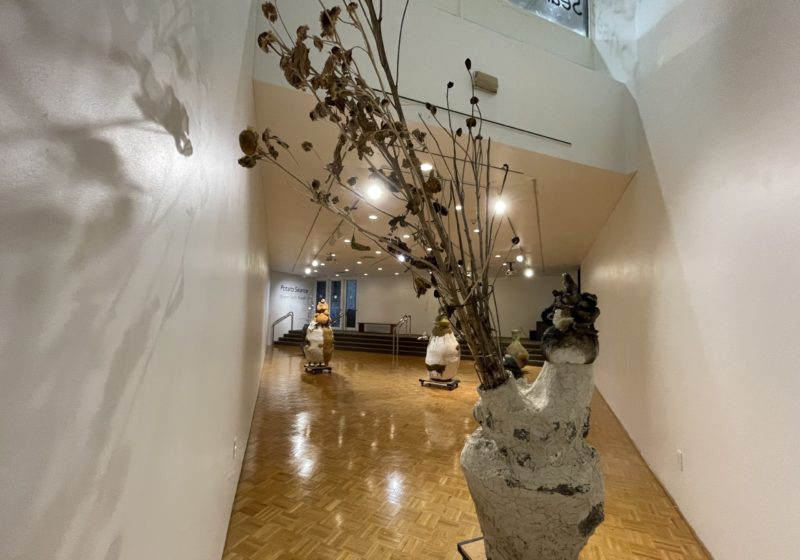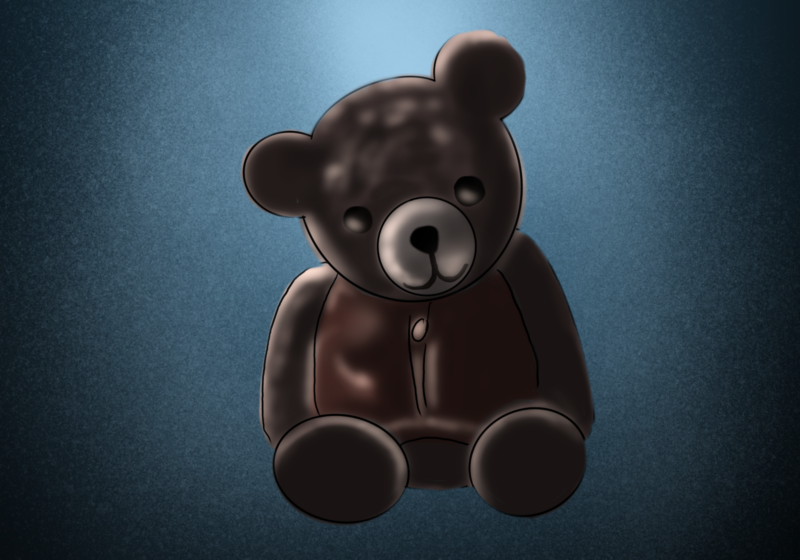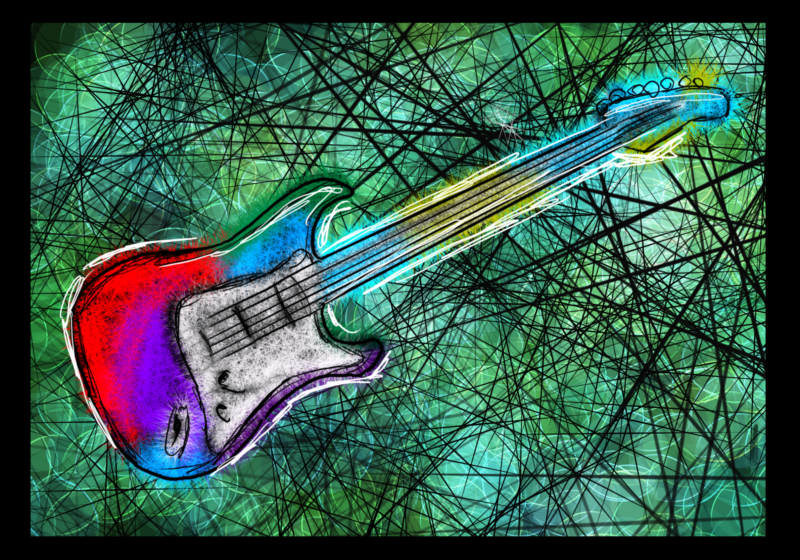Potato Seance is a solo exhibition of sculptures at the Hartnett Gallery, created by Grace Sachi Troxell. Troxell received a BS in Studio Art from Skidmore College, a postgraduate certificate from Glasgow School of Art, and an MFA from Cornell University. Her work incorporates a wide range of materials, from steel and clay to vegetables and other organic matter, to represent the eroding line between growth and decay, animate and inanimate, and life and death.
The Potato Seance exhibition features five pieces. The opening sculpture has a plethora of textures, from cold, metallic parts at the top to fuzzy, almost comforting moss at the bottom. The grassy-colored model is pear-shaped, cracked at the top yet smooth at the bottom. With an irregular stem and hollow interior, one has to wonder what meaning this sculpture wishes to convey. The damaged, mold-like interior coupled with the soothing, smooth exterior could symbolize the facade of appearing grounded on the outside while simultaneously crumbling on the inside.
Moving on to the second piece, the once-hollow interior of our pear has been sealed — a bowl of cracked spheres that appear to have emerged from within the sculpture. The calming moss, initially concentrated at the bottom, surfaces and spreads throughout the pear, exposing an opening that subsequently discloses dozens of decaying, mushroom-like features that happen to be protruding from the pear’s sides as well. The sculpture’s true, decaying nature, combined with the disappearance of hollowness, could represent the dissatisfaction with putting on an act and the desire to express one’s true feelings of anguish, anger, and desperation, while the delocalization of the moss may represent the following feelings of relief and comfort.
The third piece appears to deviate from the overall theme that Troxell was attempting to present. Our once pear-shaped sculpture has evolved into a vase with three necks, one containing what appears to be a black, decaying heart, another containing a bundle of dead ferns and flowers, and the third containing a dead tree log. The reassuring moss that gave the sculpture color and life vanished, only to be replaced by an increased number of decaying protrusions extending from the sculpture’s center, as well as fissures extending throughout the piece. The artist may be portraying that allowing one’s feelings of anguish and grief to overcome them may lead to a “decaying phase of life” with no joy or glow. The sculpture’s monochromatic appearance may also prompt us to consider whether internalizing our emotions is worth the consequences. Is succumbing to our desires worth the numbness?
Troxell’s fourth piece appears to demonstrate the former option that may result from the actions of the second sculpture. The pear-like structure has returned, as has the soothing moss, which appears to have engulfed more than half of the model. Despite the moldy protrusions and fractures that remain throughout the piece, they are accompanied by a warm, white blanket of fuzz, with a platform of growing pumpkins and squash closing off the top of the sculpture. The sculpture could represent one’s ability to overcome negative emotions. The seemingly “fresh” pumpkins at the top of the sculpture juxtaposed with its decaying projections are indicative of one’s ability to grow past adversity and blossom into something as heartwarming and comforting as a patch of pumpkins. Or could the pumpkins be representative of something else? By adding elements of growth with decay, is Troxell rounding back to her initial motif of putting on a facade? Moving on to the fifth sculpture might give us a better understanding of this.
In terms of shape and metallic parts, the final piece is similar to the opener. The once common cracks and decaying interior have vanished, replaced by an earthy, gray exterior and a slew of metallic circles dotted with clay spheres atop the sculpture. The expanding metallic ellipses could represent the final stage of moving past grief, but the sculpture’s apparent “cleanliness” appears to represent the desire to hide the ugly parts of oneself. Is Troxell suggesting that moving on is synonymous with putting on a show?
The Potato Seance exhibit is typical of Troxell’s work, displaying elements of growth and decay. Troxell’s sculptures were able to convey stories of deception, deterioration, progression, and possibly even acceptance by using materials as simple as grassy moss and grayish mold. However, the question of Troxell’s true intentions for her pieces is still up in the air for debate.







